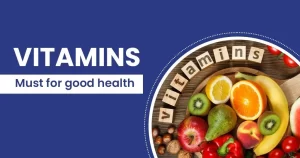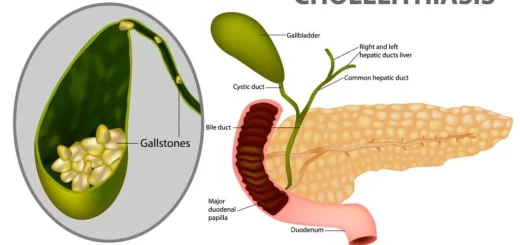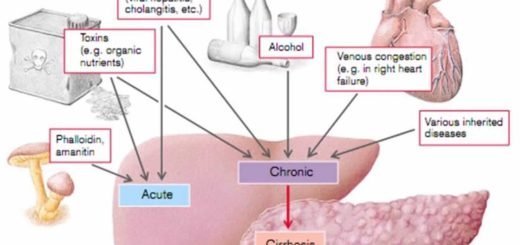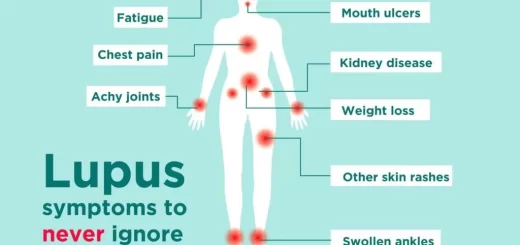Vitamins types & function, Sources of vitamin A and Deficiency of vitamin E
Vitamins are low-molecular-weight organic molecules that must be present in small amounts in the human diet to maintain good health. They are required in the diet because they perform essential functions and yet either are not synthesized by humans or are produced in amounts insufficient to support normal metabolism.
Classification of vitamins
On the basis of their solubility, vitamins are classified into two groups:
- Water soluble vitamins
- Fat-soluble vitamins
Fat-soluble vitamins
- Fat-soluble vitamins include A, D, E, and K.
- They are non-polar, hydrophobic molecules.
- All of them are isoprene derivatives.
- Lipid soluble vitamins require normal fat absorption to be absorbed.
- Once absorbed they are transported to the liver in chylomicrons.
- They are stored either in the liver (A, D, and K) or in adipose tissue (E) for varying periods.
- In blood, they are transported by lipoproteins or specific binding proteins.
- They are not excreted in urine but are excreted in feces.
- Toxicity occurs from overdosage because of the body’s ability to store excess fat-soluble vitamins (especially A and D).
- No specific coenzyme function has yet been found for any of the fat-soluble vitamins.
Vitamin A (Retinol)
Chemistry:
- The three biologically active forms of vitamin A are: retinol, retinal (retinaldehyde), and retinoic acid.
- Retinol is a complex 1ry alcohol of 20 carbon, arranged as a six-membered carbocyclic ring and an eleven-carbon side chain.
- Vitamin A is derived from the provitamin carotenes.
- The main known carotenes are a, ß, and y-carotenes.
- Synthesis of vitamin A from a. B, and y carotenes by carotenase (dioxygenase) enzyme occurs in the intestinal mucosa and the liver.
Sources of vitamin A
- Carotenes (provitamin A): dark green and yellow vegetables and fruits are good sources e.g. carrots, sweet potatoes, spinach, apricots and green leafy vegetables.
- Vitamin A is supplied by foods of animal origin e g. liver, egg yolk, butter, whole milk, and fish liver oil.
Absorption and Storage
- Vitamin A and carotenes are absorbed in the upper parts of the small intestine β-carotenes are converted to vitamin A in the liver by carotenase enzyme.
- Vitamin A is stored in the liver. The liver synthesizes retinol-binding protein for the transport of vitamin A in the blood.
Function and Physiological Role
- Role of vitamin A as anticancer agent: Vitamin A (retinol and retinoic acid) plays an important role as antioxidant, and might be expected to reduce the risk of cancers initiated by free radicals and other strong oxidants e.g. lung cancer in heavy smokers.
- Role in cell growth and differentiation: Stimulates the synthesis of specific proteins by the ribosomes. Those proteins will be involved in the regulation of cell growth and differentiation.
- Role in Epithelial Tissue: Vitamin A (retinol and retinoic acid) is essential for the health and integrity of the epithelial tissues, especially the secretory epithelium, Retinal also inhibits the synthesis and deposition of keratin by epithelial cells. preventing the development of fissures and infection in the skin and other epithelial tissues.
- Role in Vision: Δ11-cis-retinal is a component of the visual pigment, rhodopsin, of the retinal rod cells, The retinal rod cells are adapted for vision in low light intensities (night vision).
Deficiency of Vitamin A
It is characterized by:
- Night blindness: impaired vision in dim light is one of the earliest signs of vitamin A deficiency.
- Follicular hyperkeratosis (rough, scaly, and dry skin with keratinization of hair follicles).
- Xerophthalmia (dry eye due to keratinization of the epithelium of lacrimal glands and loss of tears).
- Keratomalacia (keratinization of the cornea).
Requirements: 1 mg/day
Vitamin E (Tocopherols)
Sources of vitamin E
- Cotton seed oil, corn oil, peanut oil and wheat germ oil are good sources.
- Green lettuce leaves also have high content and nearly all green-leaved plants have some vitamin E.
- Other good sources include: eggs, muscle meat, liver, and fish.
Absorption of vitamin E
Vitamin E is absorbed through the small intestine, transported in chylo-microns to the liver, and delivered in lipoproteins to peripheral tissues and stored in adipose tissues.
Functions of vitamin E
- Tocopherols have antioxidant activity i.e. they react very readily with molecular oxygen and free radicals, thus prevent autoxidation of polyunsaturated fatty acids in tissues by molecular oxygen and free radicals, If oxygen or free radicle attack the polyunsaturated fatty acids, fatty acid peroxides will result.
- Vitamin E appears to play a role in cellular respiration either by stabilizing coenzyme Q or by helping the transfer of electrons to coenzyme Q
- In various animals (but not in humans), it is essential for normal spermatogenesis and continuation of pregnancy
Requirements: 8-10 mg/day
Deficiency of vitamin E
- In humans: anaemia and hemolysis due to increased fragility of the red blood cell membrane (presumably due to peroxidation of membrane components).
- In animals: Sterility and muscular dystrophy.
You can download Science Online application on Google Play from this link: Science online Apps on Google Play
Benefits of taking Vitamin B complex and vitamin C, sources of Vitamin B6, Biotin & Lipoic Acid
Water soluble vitamins, Vitamin B complex benefits, side effects, sources & deficiency
Mineral metabolism, types, disorders, function of Sodium and Potassium




